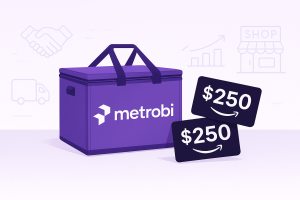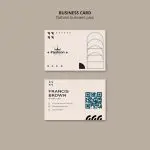When a potential client visits your website or opens your brochure, they make their first judgment in just 7 seconds. In those critical moments, your company profile either opens doors or slams them shut, leaving a lasting impression. This isn’t just marketing talk—it’s brain science. First impressions stick, and in business, they can mean the difference between growth and stagnation.
A manufacturing company in Detroit increased lead generation by 43% after revamping their profile, not by adding more technical specifications, but by telling the story of their workers’ craftsmanship. They showed rather than told, emphasizing the role of their employees in the process.
The stakes have never been higher. In our crowded digital landscape, generic company descriptions fade into background noise, highlighting the importance of unique branding. Yet most businesses still produce profiles that sound exactly like their competitors.
Is your company name and profile working hard enough for your business?
The examples and strategies in this guide represent the best approaches. They’ve been battle-tested in real markets with real customers, leading to their success. Some might challenge what you believe about effective business communication.
What if everything you know about company profiles is based on outdated assumptions? What if the “professional” tone you’ve carefully cultivated is pushing customers away?
Let’s explore what works in 2025, starting with understanding what a truly effective company profile accomplishes.
Metrobi drivers are rated 4.97/5
Trusted by local businesses for:
- Background-checked professionals
- Specialized in business deliveries
- Same drivers for consistency
- 4.97/5 average delivery rating
What is a Company Profile?
A company profile is a professional business summary that showcases your services, history, and values.
Effective profiles come in various formats, from detailed online presentations to concise brochures.
A well-crafted profile communicates who you are, what you do, and why clients should choose you.
A company profile acts as your business card on steroids. It’s a comprehensive document that tells the story of your organization, explains what sets you apart from competitors, and gives potential clients or partners a clear picture of what you offer. This document typically includes your mission statement, history, achievements, services, your logo, and other essential information about your business.
Think of your company profile as the first formal introduction to your business. When potential clients, investors, or partners want to know more about your company, this is often the first document they’ll look for. According to census data, with over 33.2 million small businesses in the United States alone (roughly one business for every ten people in the country), a strong company profile helps you stand out in this crowded marketplace.
The most effective company profiles balance being informative with being engaging. They provide enough technical details to establish credibility while telling a compelling story that resonates with the reader. A good profile answers key questions about your business: Who are you? What do you do? How do you do it? Why should someone work with you rather than a competitor?
Examples of Effective Company Profiles
When looking at successful company profiles, certain elements consistently appear across industries. Companies like Apple, Microsoft, and smaller businesses that excel at presenting themselves share common traits in their profiles.
Apple’s company profile, for instance, emphasizes innovation and design while keeping the language simple enough for any reader to understand. They highlight key milestones in their history without overwhelming the reader with excessive details. Their profile effectively communicates their core values of innovation, quality, and user experience.
Microsoft takes a different approach, focusing on their mission to “empower every person and every organization on the planet to achieve more.” Their profile highlights their transition from a software company to a comprehensive technology solutions provider, demonstrating how company profiles can evolve with the business.
Smaller businesses often create compelling profiles by emphasizing their unique stories and personal touches. For example, many successful local businesses include the founder’s journey, explaining why they started the company and what problems they initially set out to solve.
What makes these profiles successful? They all:
Present clear value propositions
Use simple, direct language
Include compelling visuals that support their messaging
Focus on benefits to customers rather than just features
Maintain consistency in tone and brand voice
Types of Business Profiles
Company profiles come in various formats, each serving different purposes and audiences. In 2025, businesses typically maintain several profile versions to address different contexts and reader needs. The most common types are online profiles and printed brochures, each with distinct characteristics and purposes.
Each type serves specific business needs and reaches different audience segments. With approximately 359 million companies worldwide and about 100 million new businesses starting each year globally, having the right profile type for your specific business goals becomes increasingly important.
Online Profiles
Online company profiles have become essential in our digital-first business environment. These profiles appear on company websites, LinkedIn, and other digital platforms where potential clients or partners might encounter your business.
Effective online profiles optimize for both human readers and search engines. They incorporate keywords naturally to improve visibility while maintaining readability and engagement. According to recent data, businesses are increasingly highlighting their use of AI for predictive analytics and operational efficiency in their online profiles to showcase innovation and forward-thinking values.
The best online profiles feature:
Clean, intuitive navigation that guides readers through your story
Mobile responsiveness for viewing on any device
Strategic keyword placement for SEO without sacrificing quality
Compelling visuals including photos, videos, and infographics
Clear calls to action that guide the reader’s next steps
Testimonials and social proof to build credibility
Interactive elements that encourage engagement
In 2025, with small businesses making up 90% of all businesses globally, online profiles have become increasingly sophisticated, with many incorporating interactive elements that allow potential clients to experience aspects of the business before making contact. To further enhance your online presence, consider leveraging top business listing platforms that can significantly boost your company’s visibility and credibility. Optimizing your profile across these venues helps attract a broader audience and drives organic traffic to your main site. For a comprehensive overview and recommendations, check out this insightful list of the best business directories for 2025.
Expanding your presence through reputable business listing platforms is crucial for gaining competitive advantage in today 27s market. Leveraging these trusted directories not only enhances your SEO but also builds credibility with potential customers who rely on these sites for trusted information. Our detailed guide on the best business listing sites in 2025 explores effective strategies to maximize your visibility and engagement across various platforms.
Brochures With a Great Company Profile Template
Despite the digital shift, physical brochures remain valuable tools for face-to-face meetings, trade shows, and networking events. These condensed versions of your company profile provide tangible representations of your business that prospects can take with them.
Effective brochure and company profile templates are:
Concise yet comprehensive, typically 4-10 pages
Visually striking with high-quality printing and design
Structured for quick information scanning
Complementary to your online presence, not duplicative
Tailored to specific events or audience segments
Physical brochures offer benefits that digital profiles cannot match. They create a tactile experience that can leave a stronger impression in certain contexts. For trade shows where attendees are overwhelmed with digital information, a well-designed brochure can stand out.
The most successful brochures balance text with visual elements, using infographics to communicate complex information quickly. They typically include contact information prominently displayed on every page, ensuring readers can reach out regardless of which section captures their interest.
What Should a Company Profile Include?
Whether online or in print, an effective company profile template typically includes these key elements:
Mission statement and core values
Brief company history with key milestones
Overview of products or services
Team information (key leadership at minimum)
Evidence of expertise (case studies, client list, awards)
Unique selling proposition (what sets you apart)
Contact information and call to action
The exact mix and emphasis depend on your industry and target audience. B2B companies often focus more on case studies and technical capabilities, while B2C businesses might emphasize their brand story and customer experience.
As business formation continues at a rapid pace across industries (with the U.S. Census Bureau reporting thousands of new applications monthly in sectors like retail trade, construction, and manufacturing), creating a distinctive profile becomes increasingly important for new businesses attempting to establish themselves in competitive markets.
Remember that your company profile isn’t set in stone. As your business evolves, your profile should too. Many successful businesses review and update their profiles quarterly to reflect new achievements, offerings, and strategic directions.
Benefits of Crafting Impactful Business Profiles
A well-crafted business profile directly boosts your company’s trustworthiness.
Strong profiles serve as powerful marketing tools, increasing your reach
Effective profiles create lasting first impressions that convert prospects to customers
A business profile works as your company’s digital handshake. When created with care, it builds immediate credibility with potential clients and partners by conveying a brief story. Research from Edelman’s Trust Barometer shows that 81% of consumers need to trust a brand before making a purchase. Your company profile serves as the first step in this trust-building process.
Business profiles serve multiple purposes beyond simple introductions. They function as marketing assets, sales tools, and trust signals, often including financial information. A 2024 study by Content Marketing Institute found that companies with detailed, transparent profiles saw 34% higher engagement rates on their websites compared to those with minimal information. This engagement directly translates to business opportunities.
The difference between a basic profile and an impactful one often determines whether a prospect continues their journey with your company or moves on to a competitor. Profiles that communicate your value proposition, company history, and unique selling points help differentiate your business in crowded markets.
Building Trust
Transparency has become the cornerstone of modern business relationships. When your company profile openly discusses your values, processes, and even challenges, it signals authenticity. According to research from Sprout Social, 86% of Americans say transparency from businesses is more important than ever before.
“Credibility says everything about you.” This simple statement captures why transparency matters in business profiles. When companies share their origin stories, including struggles and failures along with successes, they appear more human and relatable. This approach creates emotional connections with audiences who increasingly demand authenticity from the brands they support.
Trust Through Ethics and Social Responsibility
Modern consumers expect businesses to demonstrate ethical practices and social responsibility. A 2025 Global Consumer Sentiment Survey found that 73% of consumers consider a company’s ethical stance before making purchasing decisions. Your company profile provides the perfect opportunity to highlight these commitments and your connection to the community.
When explaining your ethical framework, be specific rather than general. Instead of simply stating “we’re committed to sustainability,” share actual initiatives, metrics, and goals. For example, Patagonia’s company profile details their specific environmental programs, repair policies, and material sourcing standards, making their commitments concrete and measurable.
“Trust starts with trustworthy leadership,” emphasizing that credibility begins at the top of an organization. This principle should be reflected in how leadership is presented in company profiles. Including personal statements from founders or executives about their vision and values adds another layer of authenticity and transparency.
Increasing Visibility
A well-crafted company profile works continuously to increase your visibility online. The digital landscape demands more than mere presence—it requires optimization. According to SEO experts at Ahrefs, business profiles optimized for search engines receive 53% more organic traffic than non-optimized ones.
Search engine optimization starts with thorough keyword research relevant to your industry and services. Integrating these keywords naturally throughout your profile helps search engines understand what your business offers. The most effective profiles use primary keywords in headings, subheadings, and opening paragraphs without overstuffing content, which can harm rankings.
Beyond keywords, search engines increasingly value comprehensive information and regular updates. “With each new article that you post online, you are creating more credibility and SEO for your brand.” This connection between content freshness and search visibility encourages businesses to treat their profiles as living documents rather than static pages.
Amplifying Reach Through Social Channels
Social media platforms extend the reach of your company profile exponentially. Research from Hootsuite shows that business profiles shared across social channels receive 4.5 times more views than those limited to company websites. This increased exposure creates opportunities for organic growth, allowing audiences to discover your brand. To further boost your company’s online presence, consider listing your business on reputable online directories. These platforms not only enhance visibility but also improve SEO rankings by driving quality traffic to your profile. Explore our detailed guide on the top business listing platforms that can elevate your brand in 2025 to make informed decisions and maximize your outreach.
Creating shareable elements within your profile helps leverage social media’s network effects. Visual elements like infographics displaying company milestones, team structures, or process flows are highly shareable. According to Buffer’s 2025 Social Media Trends Report, content with visual elements receives 94% more total views than text-only content.
The relationship between social sharing and credibility works both ways. When people share your profile, they implicitly endorse your business to their networks. This social validation creates a powerful trust signal, as people typically trust recommendations from their connections more than direct marketing messages, especially when they account for personal experience. Hubspot research indicates that 71% of consumers are more likely to purchase based on social media referrals.
How to Write a Standout Corporate Profile
A compelling company profile combines clarity, strategic storytelling, and visual appeal.
Effective profiles balance company achievements with customer-focused benefits.
Structure and specificity matter more than length or technical language
Step #1: Research and Define Your Purpose
Before writing a single word, you need to know exactly who you’re writing for and what you want them to do after reading your profile. This research phase, much like finding the right store for your products, determines whether your company profile will resonate with readers or fall flat.
You can start by identifying your primary audience segments. Are they potential clients, investors, job candidates, or industry partners? Each audience needs different information. For example, investors want financial data and growth potential, while clients care about how your services solve their problems. Create specific reader personas with job titles, challenges, and goals to guide your content decisions.
Next, clarify your objectives. A good company profile has clear goals like generating leads, attracting talent, or building brand awareness. Your goals shape the tone, content focus, and calls to action. Write these goals down and rank them by priority. This keeps your profile focused instead of trying to accomplish too much at once.
Researching Your Competitive Landscape
Study at least five competitor profiles in your industry. It is best to note what works well and what doesn’t. What information do they include? What tone do they use? How do they structure their content? This analysis helps you identify gaps and opportunities to make your profile stand out.
Create a document that catalogs your company’s unique selling points compared to competitors. These differentiators should feature prominently in your profile. The best company profiles don’t just list services but explain why they matter and how they differ from alternatives.
Step #2: Structure and Design
A well-structured company profile guides readers through your story without overwhelming them. The organization of information matters as much as the content itself.
You can start with a clear outline that follows a logical progression:
Company overview (mission, vision, brief history)
Problem you solve and for whom
Products/services with brief descriptions
Key differentiators and unique approach
Team highlights or leadership profiles
Achievements and social proof
Call to action
Visual Elements That Strengthen Your Message
The visual presentation of your company profile significantly impacts how readers process information. Even the most compelling content loses impact when presented as dense text blocks.
Incorporate these visual elements:
Professional photographs of your team, workspace, and products
Custom graphics that illustrate concepts or processes
Charts and graphs for statistics and data points
Pull quotes highlighting key messages
Icons to break up text and guide the eye
Consistent brand colors and typography
Step #3: Craft a Compelling Introduction
Your introduction determines whether readers continue or click away. It must quickly communicate who you are and why the reader should care.
A strong introduction includes:
A clear statement of who you are and what you do
The specific problem you solve for customers
A brief mention of how your approach differs from others
A hint at your company’s personality and values
Opening Lines That Grab Attention
The first 1-2 sentences determine whether readers continue. You can start with one of these proven approaches:
A surprising industry statistic that highlights the problem you solve
A direct question addressing the reader’s challenge
A bold statement about your company’s mission or impact
A short client success story that demonstrates your value
Test different openings with team members or trusted clients to see which generates the most interest.
Step #4: Highlight Your Unique Selling Points
After capturing attention with your introduction, the next section should clearly explain what makes your company different. This is where many company profiles fail by offering vague claims instead of specific differentiators.
To identify genuine USPs, ask these questions:
What do we do that competitors can’t or don’t do?
What processes, technologies, or approaches are unique to our company?
What problems do we solve better than others?
What values guide our work that differ from industry norms?
For each USP, provide brief evidence or examples. If you claim to offer faster service, specify exactly how much faster and why that matters to customers.
Step #5: Incorporate Proof Points and Credibility Markers
Claims without evidence create skepticism. Strong company profiles include proof points that build trust and credibility.
Effective proof elements include:
Client testimonials with specific results
Case studies summarizing challenges and solutions
Industry awards and recognition
Key partnerships or client logos (with permission)
Certifications and credentials
Relevant statistics and data points
Media mentions or publications
It is better to choose quality over quantity. One detailed case study tells a more compelling story than a list of ten client names without context.
Presenting Social Proof Effectively
When including testimonials, follow these guidelines to cover all important aspects :
Use real names and companies when possible
Include photos of clients to increase perceived authenticity
Quote specific results rather than generic praise
Choose testimonials that address different aspects of your service
Update testimonials regularly to keep them current
Step #6: Tell Your Company Story Authentically
People connect with stories more than facts. Your company history, when told well, builds emotional connection and memorability.
Focus on these storytelling elements:
The founding problem or insight that sparked your company
Key milestones and pivotal moments in your growth
Challenges overcome and lessons learned
Evolution of your products or services
The “why” behind your company mission
Keep the story focused on aspects relevant to customers rather than internal details that don’t impact them. For example, the specific date you moved offices matters less than how a new technology investment improved client outcomes.
Humanizing Your Brand
Include the human elements that make your company relatable:
Brief profiles of key team members with professional backgrounds and personal interests
Company culture highlights that reflect your values
Community involvement and social responsibility initiatives
Behind-the-scenes glimpses of how you work
These personal touches transform your company from an abstract entity into a team of real people solving real problems.
Step #7: Structure and Design Your Content
Even the best content fails without proper structure and design. Your company profile should be easy to navigate with a clear information hierarchy.
Essential structural elements include:
Logical section flow with clear transitions
Descriptive headings and subheadings
Consistent formatting for similar information types
Strategic use of white space to prevent overwhelm
Balanced text-to-image ratio (aim for 60% text, 40% visuals)
Skimmable format with important points highlighted
Design Elements That Enhance Readability
Specific design techniques improve comprehension and engagement with these simple steps :
Bullet points for lists and features
Pull quotes to emphasize key messages
Sidebars for supplementary information
Numbered steps for processes
Color coding for different service categories
Icons to represent concepts visually
Data visualization for statistics
Remember that design should serve the content, not compete with it. Maintain consistency with your brand guidelines while prioritizing readability above all.
Step #8: Edit Ruthlessly for Clarity and Impact
Once you’ve drafted your company profile, the real work begins. Editing transforms good content into great content by removing excess and sharpening key messages.
Follow this editing process:
Cut the overall length by 20% in your first pass
Eliminate jargon and replace it with plain language
Reduce sentence length (aim for 15-20 words on average)
Replace passive voice with active voice
Remove redundancies and repetitive phrasing
Check for consistency in terminology and style
Verify all facts, figures, and claims
The Value of Professional Editing
Consider hiring a professional editor for your final draft. They bring fresh perspective and specialized skills that internal teams may lack. If budget constraints make this impossible, use editing tools like Grammarly or Hemingway Editor to catch common issues.
Final edits should ensure that every element of your profile serves your strategic goals. Ask of each paragraph: “Does this directly support our objectives?” If not, revise or remove it.
Step #9: Implement and Update Regularly
A company profile isn’t a one-time project. It requires regular updates to customize and remain accurate and effective.
Create an update schedule with these checkpoints:
Quarterly review of facts, figures, and team information
Bi-annual refresh of case studies and testimonials
Annual evaluation of strategic messaging alignment
Immediate updates for major company developments
Track how people interact with your profile using analytics tools. Which sections get the most attention? Where do readers drop off? Use these insights to continually refine your content.
Distribution Strategies
Your perfectly crafted profile won’t work if nobody sees it. Create a distribution plan that includes:
Prominent placement on your website
Inclusion in sales materials and pitch decks
PDF version for email attachments
Sections repurposed for social media
Inclusion in media kits and press materials
References in email signatures and business cards
You can make different versions for different contexts. Your full profile might be 4-6 pages, but create a one-page version for initial contacts and specific audience segments.
A well-crafted company profile works continuously to build your brand and generate interest. With regular updates and strategic distribution, it becomes one of your most valuable marketing assets.
Company’s Mission Statement On Your Business Profile
Your company profile is more than a document—it’s the foundation of your business’s first impression. In 2025, strong profiles combine clarity, personality, and visual appeal to stand out in a crowded market. Whether online or in print, these examples show that successful profiles share key qualities: they tell a compelling story, highlight unique strengths, and connect with specific audiences.
Remember that a great profile builds trust and visibility. As you craft yours, start with clear research, structure information thoughtfully, and balance professional achievements with your company’s values. The best profiles we’ve examined don’t just list facts—they communicate why customers should care.
You should take these examples as starting points, not templates. Your business has its strengths that deserve to shine. A thoughtfully created profile works silently but effectively, offering solutions and opening doors long before you enter the room.
Ready to create your standout company profile? Begin by defining what makes your business truly different, then tell that story with confidence. Your future clients and partners are waiting to be impressed.













